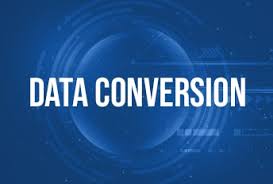Data Converter Tools: Simplifying Computer Data & Storage Conversions
Data Converter Tools: Simplifying Computer Data & Storage Conversions
In the digital era, data is everywhere—from files on your computer to massive databases stored in the cloud. Understanding data sizes and converting between units like bits, bytes, kilobytes, gigabytes, and even petabytes is essential. This is where data converter tools come into play. They provide a simple, accurate, and fast way to convert one data unit into another, saving time and avoiding errors.
In this guide, we’ll explore the importance of data converter tools, popular conversions, practical applications, and why these tools are indispensable for professionals and casual users alike.
Why Data Converter Tools Are Important
- Accuracy and Precision
- Manual conversion of large or small data units can easily lead to mistakes. Online tools ensure precise conversions between standard units like bytes and high-scale units like yottabytes.
- Time Efficiency
- Converting data manually involves formulas and calculations, especially for larger units. A converter tool provides instant results.
- Universal Usage
- These tools are useful for students, IT professionals, engineers, programmers, and anyone dealing with digital storage or computing tasks.
- Ease of Use
- With a user-friendly interface, most converters require just the input value and the desired output unit, providing immediate results.
Popular Data Converter Tools
1. Basic Data Unit Conversions
These converters handle everyday data units:
- Bits (b) to Bytes (B) – Essential for basic computer storage calculations.
- Bytes (B) to Kilobytes (KB) or Megabytes (MB) – Useful for file size estimation and storage planning.
- Kilobytes (KB) to Megabytes (MB), Gigabytes (GB), or Terabytes (TB) – Helps understand and compare digital storage.
✅ Example: 1024 bytes equals 1 kilobyte (KB).
2. Advanced Binary Conversions
Computers often use binary prefixes like kibibytes (KiB), mebibytes (MiB), and gibibytes (GiB). These tools help convert:
- Kibibits (Kib) to Bytes (B)
- Gibibits (Gib) to Bytes (B)
- Tebibytes (TiB) to Terabytes (TB)
These conversions are crucial for developers, IT administrators, and anyone managing precise digital storage calculations.
✅ Example: 1 Gibibits (Gib) = 1,073,741,824 bits.
3. Large-Scale Data Conversions
For enterprise or scientific purposes:
- Petabytes (PB) to Bytes (B) – Useful for cloud storage or data centers.
- Exabytes (EB) to Terabytes (TB) – Critical for handling internet-scale data.
- Yottabytes (YB) and Yobibits (Yib) – Ideal for theoretical storage or research in massive datasets.
✅ Example: 1 Yottabyte (YB) = 1,000,000,000,000,000,000,000,000 bytes.
4. Specialized Conversions
Other useful converters include:
- Bits to Nibbles – One nibble equals 4 bits, useful in low-level programming.
- Bytes to Petabytes – Helps visualize and calculate large-scale data storage.
- Quettabits (Qb) to Quettabytes (QB) – For futuristic or theoretical storage calculations.
✅ Example: 1 nibble = 4 bits, often used in microcontrollers or embedded systems.
Benefits of Using Data Converter Tools
- Time-Saving
- No need for manual calculations, formulas, or online searches—convert data instantly.
- Supports Both Decimal & Binary Units
- Converts both SI units (KB, MB, GB) and binary units (KiB, MiB, GiB) accurately.
- Ideal for Professionals
- Programmers, system admins, and engineers can quickly calculate memory requirements or file transfers.
- Educational Value
- Students studying computer science or digital electronics can verify homework or understand unit relationships.
- Error Reduction
- Eliminates mistakes in calculations for high-scale units like exabytes or zettabytes.
Practical Applications of Data Converter Tools
- File Management – Determine how many files can fit on a USB drive or cloud storage.
- Programming – Convert memory sizes for software development and database optimization.
- Data Centers & Cloud Storage – Calculate storage allocation for servers and virtual machines.
- Networking – Convert bandwidth requirements in bits, bytes, or megabits per second (Mbps).
- Research & Science – Handle massive datasets in astronomy, physics, or machine learning projects.
✅ Example: Planning a cloud storage solution with 500 TB can be easily converted to terabits or gigabytes for pricing and deployment decisions.
Tips for Choosing the Best Data Converter Tool
- Wide Unit Support – Ensure the tool covers both small units (bits, bytes) and massive units (yottabytes, quettabytes).
- User-Friendly Interface – Easy-to-use tools save time and reduce errors.
- Mobile & Desktop Compatibility – Access converters anywhere, whether on PC or smartphone.
- High Precision – For binary units and scientific calculations, precision is essential.
- Optional Features – Batch conversions, reverse conversions, or historical storage calculations can be helpful for professionals.
Conclusion
Data sizes are a fundamental part of computing, and accurate conversion is critical in both professional and everyday digital life. Data converter tools simplify this task, making it fast, precise, and easy.
From bits to bytes and kilobytes to petabytes to futuristic units like quettabytes, these tools ensure you always get accurate results. Whether you’re a student, programmer, IT professional, or data scientist, having a reliable data converter tool saves time, reduces errors, and enhances efficiency.
Start using data converter tools today and make digital storage management, software development, and data analysis simpler than ever!
